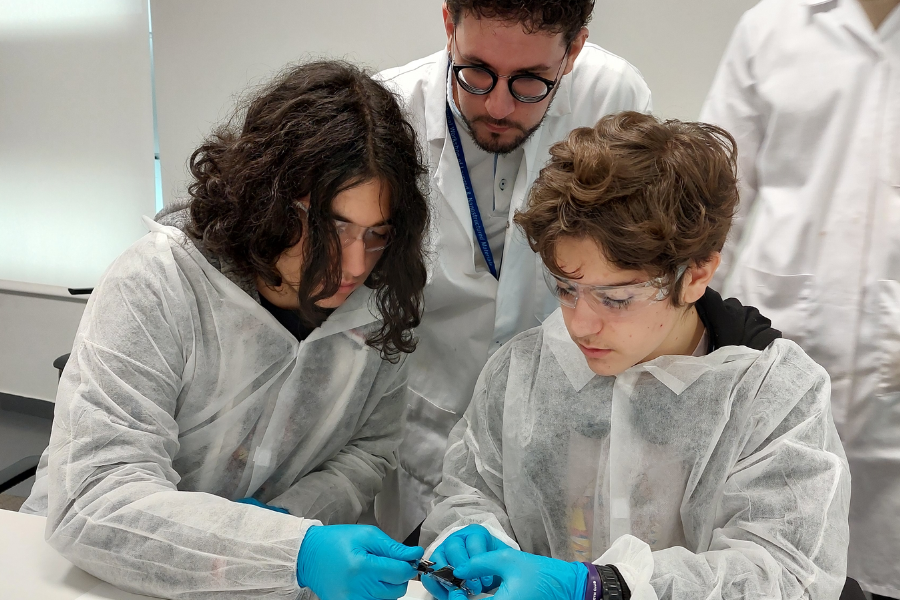IMDEA Energy opens its doors to more than 100 students during Science and Innovation Week
Once again this year, Institute IMDEA Energy has participated in the Science and Innovation Week with the aim of bringing research closer to society and awakening scientific vocations.
In this context, more than 100 students from Secondary and High School visited the center from November 14 to 17.
The activities began with students from Brewster American Schools in Madrid and IES Padre Juan de Mariana in Talavera de la Reina.
The students have visited IMDEA Energía’s scientific facilities such as the pyrolysis pilot plant where they have learned about thermochemical processes, refining stages and subsequent upgrading.
In the pilot plant of photosynthetic microorganisms of the Biotechnological Processes Unit they have discovered the operation of the photobioreactors for the cultivation of microalgae for the production of third generation biofuels, while in the laboratory for testing electrochemical devices they have been shown different energy storage devices, mainly batteries, explaining the research work in the area of storage linked to renewable energies.
In addition, they have participated in a practical workshop based on the production of biodiesel at laboratory scale and in a board game to analyze the opportunities and disadvantages of the integration of electric car batteries into the electricity grid competing with different vehicle models.
The 4th year secondary students of CEIPS Velázquez in Fuenlabrada and the 2nd year high school students of the Leonardo Da Vinci Institute in Majadahonda have completed the cycle of visits.
On November 16 and 17, the research staff of the Systems Analysis Unit taught the participants how to calculate their own carbon footprint in order to raise awareness about consumption in four areas: transport, energy, consumption and urban planning.
Together with the Photoactivated Processes and Advanced Porous Materials units, they learned how to make a thin-film photovoltaic cell using porous titania and some ingredients easily found in everyday life. In this way, the students understood the function of each material and the basic mechanism of the cell, as well as artificial photosynthesis, underlining the importance of using porous materials to accelerate the process.
Finally, the High Temperature Processes Unit carried out a workshop on concentrating solar thermal energy in which they combined theoretical explanations about concentrating solar thermal energy and its different forms of conversion (into heat, mechanical, electrical or chemical) with practical demonstrations.



